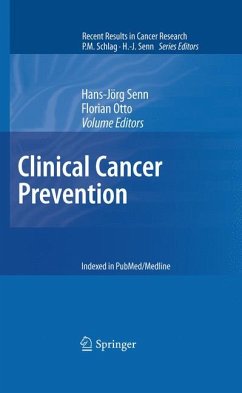
Breast Cancer Risk Reduction and Early Detection (eBook, PDF)
Versandkostenfrei!
Sofort per Download lieferbar
80,95 €
inkl. MwSt.
Weitere Ausgaben:

PAYBACK Punkte
40 °P sammeln!
While many comprehensive texts have been written on the treatment of breast cancer, the most common cancer among women, there are relatively few which cover in depth the prevention and early detection of the disease. The goal of this work is to present what experts in the ?eld feel is the current knowledge and future direction of breast cancer prevention and early detection. We begin Part I of the book with a review of risk factors, both genetic and environmental. We next review progress in the use of chemoprevention. Notably, chemoprevention risk reduction studies have led to FDA approval of ...
While many comprehensive texts have been written on the treatment of breast cancer, the most common cancer among women, there are relatively few which cover in depth the prevention and early detection of the disease. The goal of this work is to present what experts in the ?eld feel is the current knowledge and future direction of breast cancer prevention and early detection. We begin Part I of the book with a review of risk factors, both genetic and environmental. We next review progress in the use of chemoprevention. Notably, chemoprevention risk reduction studies have led to FDA approval of two medications which measurably reduce disease incidence among women at increased risk, although with some risk of treatment related side effects. Newer agents in the pipeline, which may also reduce risk among normal risk women, are also discussed. Surgical risk reducing strategies complete the section on prevention, including both the bene?ts and downsides to this more aggressive approach. Even with aggressive prevention strategies, some women will develop breast cancer. For these women, early detection is critical to minimize disease spread and maximize long term survival. Part II of this book reviews current and upcoming approaches to early detection. Imaging strategies, including mammography, breast ultrasound, MRI, and PET imaging are reviewed. The potential for molecular tumor targeting to detect disease prior to the formation of a mass visible by anatomic imaging is presented.
Dieser Download kann aus rechtlichen Gründen nur mit Rechnungsadresse in A, B, BG, CY, CZ, D, DK, EW, E, FIN, F, GR, HR, H, IRL, I, LT, L, LR, M, NL, PL, P, R, S, SLO, SK ausgeliefert werden.













